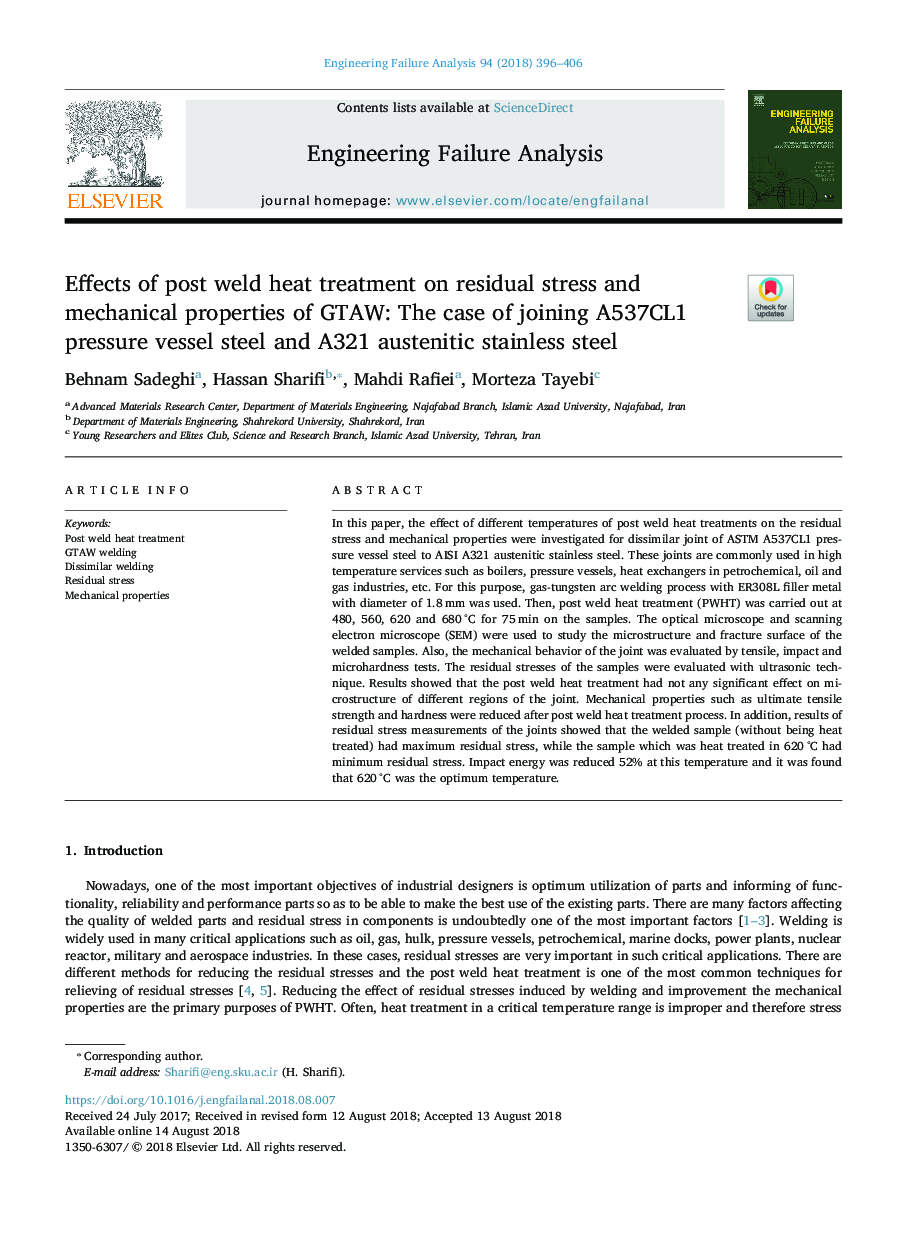| کد مقاله | کد نشریه | سال انتشار | مقاله انگلیسی | نسخه تمام متن |
|---|---|---|---|---|
| 11003860 | 1462932 | 2018 | 11 صفحه PDF | دانلود رایگان |
عنوان انگلیسی مقاله ISI
Effects of post weld heat treatment on residual stress and mechanical properties of GTAW: The case of joining A537CL1 pressure vessel steel and A321 austenitic stainless steel
دانلود مقاله + سفارش ترجمه
دانلود مقاله ISI انگلیسی
رایگان برای ایرانیان
کلمات کلیدی
موضوعات مرتبط
مهندسی و علوم پایه
سایر رشته های مهندسی
مهندسی صنعتی و تولید
پیش نمایش صفحه اول مقاله

چکیده انگلیسی
In this paper, the effect of different temperatures of post weld heat treatments on the residual stress and mechanical properties were investigated for dissimilar joint of ASTM A537CL1 pressure vessel steel to AISI A321 austenitic stainless steel. These joints are commonly used in high temperature services such as boilers, pressure vessels, heat exchangers in petrochemical, oil and gas industries, etc. For this purpose, gas-tungsten arc welding process with ER308L filler metal with diameter of 1.8â¯mm was used. Then, post weld heat treatment (PWHT) was carried out at 480, 560, 620 and 680â¯Â°C for 75â¯min on the samples. The optical microscope and scanning electron microscope (SEM) were used to study the microstructure and fracture surface of the welded samples. Also, the mechanical behavior of the joint was evaluated by tensile, impact and microhardness tests. The residual stresses of the samples were evaluated with ultrasonic technique. Results showed that the post weld heat treatment had not any significant effect on microstructure of different regions of the joint. Mechanical properties such as ultimate tensile strength and hardness were reduced after post weld heat treatment process. In addition, results of residual stress measurements of the joints showed that the welded sample (without being heat treated) had maximum residual stress, while the sample which was heat treated in 620â¯Â°C had minimum residual stress. Impact energy was reduced 52% at this temperature and it was found that 620â¯Â°C was the optimum temperature.
ناشر
Database: Elsevier - ScienceDirect (ساینس دایرکت)
Journal: Engineering Failure Analysis - Volume 94, December 2018, Pages 396-406
Journal: Engineering Failure Analysis - Volume 94, December 2018, Pages 396-406
نویسندگان
Behnam Sadeghi, Hassan Sharifi, Mahdi Rafiei, Morteza Tayebi,